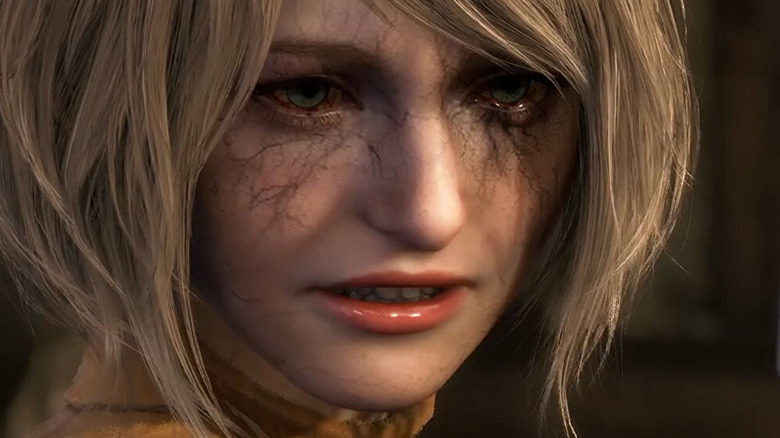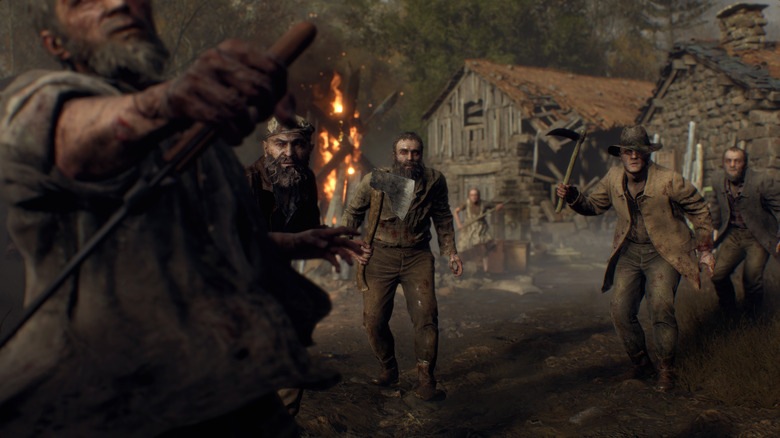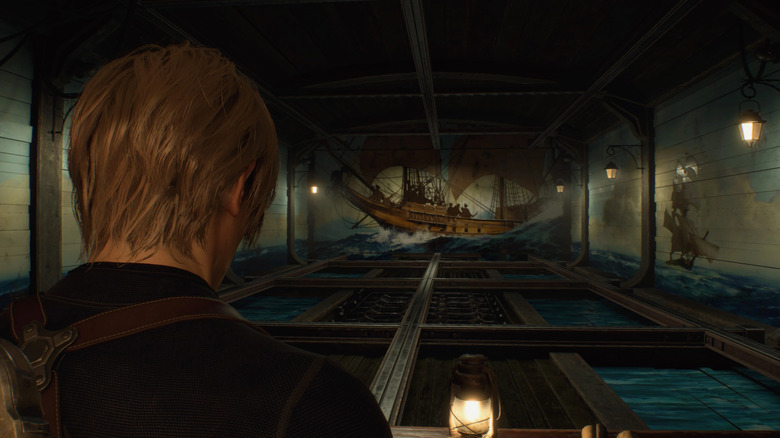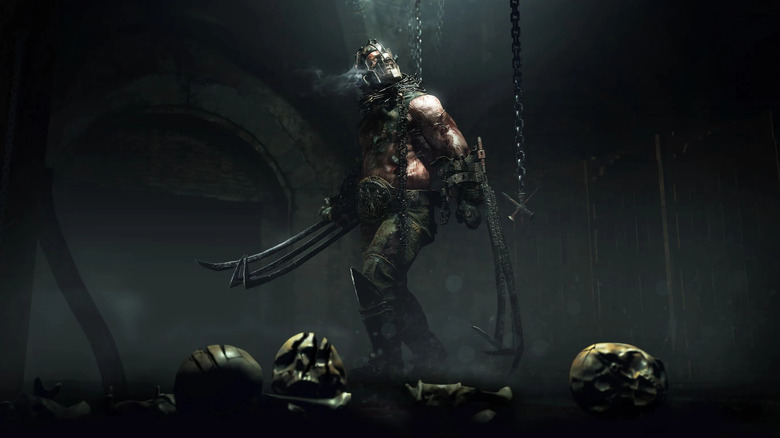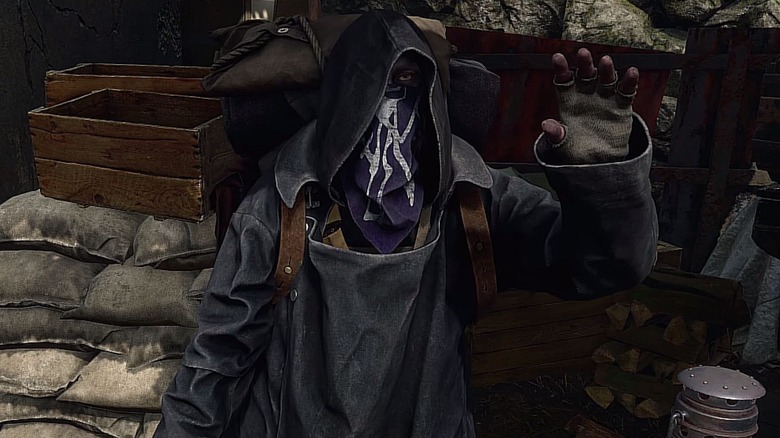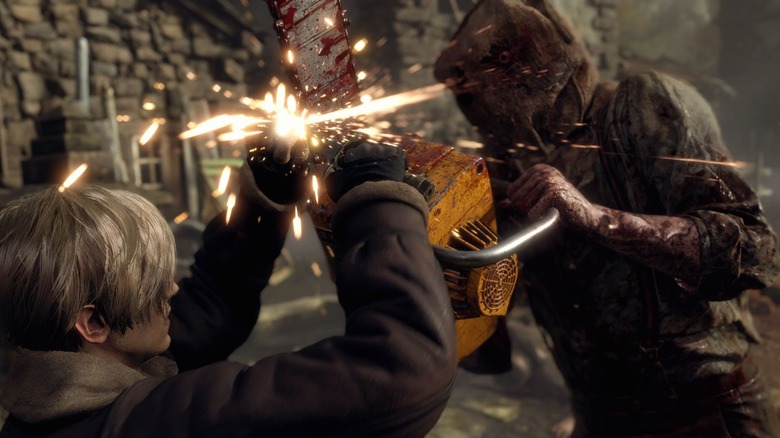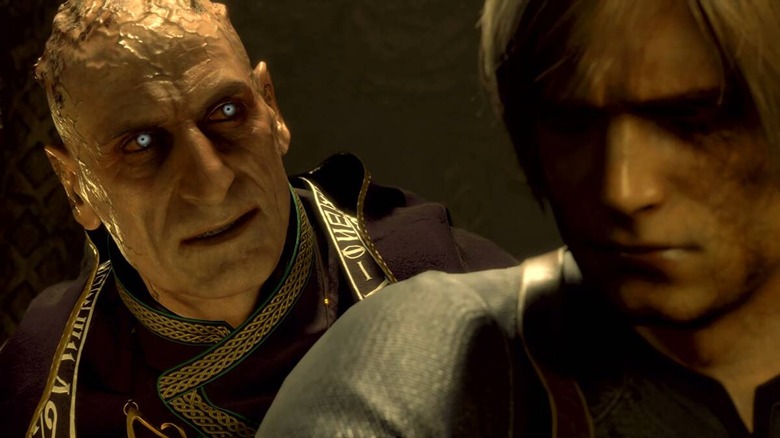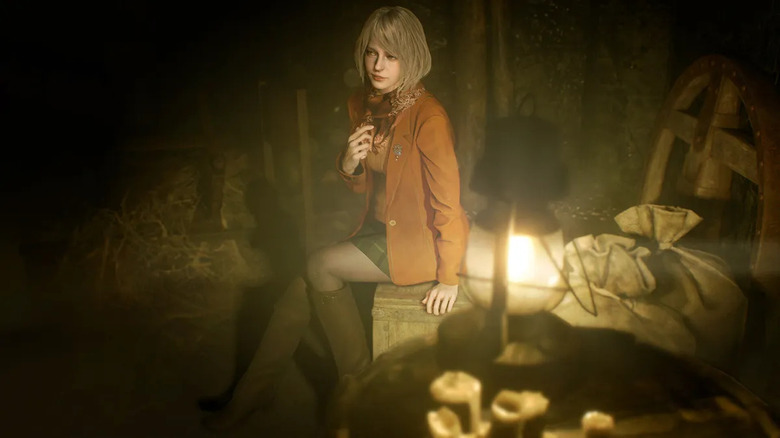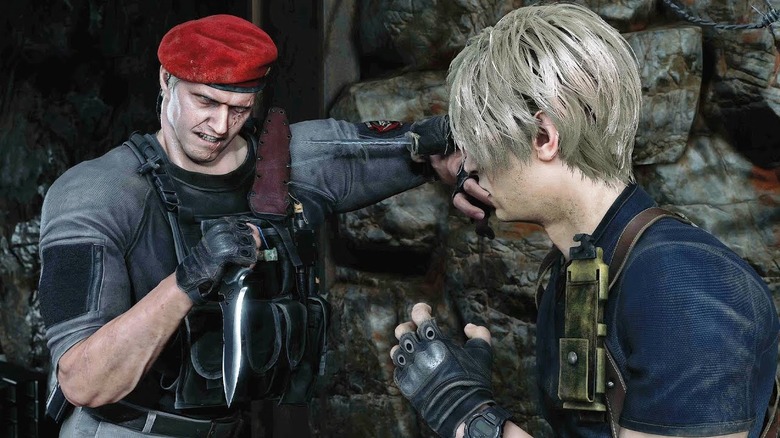Resident Evil 4 Remake: 5 Best And 4 Worst Changes
Remakes are always a tricky proposition, overhauling older titles with entirely new assets, engines, and even mechanical changes. While going the remake route (rather than simply a remaster with a facelift) poses the risk of alienating fans or making negative changes to the game, it is the route that Capcom has gone for remaking its classic "Resident Evil" survival horror series.
And Capcom's strategy remaking its classic "Resident Evil" games has worked well! Now the classic "Resident Evil 4" has been remade on the RE Engine, bringing the beloved action-horror game to modern times. On top of the new engine, numerous changes have been brought to the remake. Even so, it has managed to keep the tone and atmosphere of the original, all while feeling thoroughly updated and fresh — even if all of the changes don't quite work as well as their peers.
Here are the best and worst changes made in the new "Resident Evil 4."
BEST: Graphical Improvements
One of the most noticeable changes in the "Resident Evil 4" remake is its complete graphical overhaul. The title was rebuilt from the ground up in Capcom's RE Engine, which was first rolled out for "Resident Evil 7." The new engine and hardware allowed Capcom to completely re-imagine the original's rural Spanish setting with increased fidelity, greater detail, improved lighting, and occasionally realistic gore.
While improved graphics are always nice to look at, there are two particular ways in which "Resident Evil 4" uses its new graphical power to improve the player experience. The first is just how much more detail can be seen in the environment. Eagle-eyed players will be able to pick out clues from their surroundings that explain what the culture was like here before the village got messed up. The developers have been able to add a great deal of character to the game's world while also grounding it in a somber sense of realism.
The remake also uses its improved graphical fidelity and visual systems to build a greater sense of atmosphere throughout the world. The advanced lighting systems help to ratchet up the tension at key moments, just before the new gore systems and enemy animations bring the brutal combat to life. It all serves to keep the player on the edge of their seat and constantly remind them of the dangerous situation that they are in.
WORST: Shooting Range Rewards
The shooting range is a returning feature from the original "Resident Evil 4." They can be found throughout the world and require players to shoot moving targets and accumulate as many points as possible in a limited window of time. While they can be a good bit of fun, the remake adds a new reward system that is rather disappointing.
When players complete shooting ranges in "Resident Evil Remake 4," they are given tokens based on their performance. Those tokens can then be spent at a vending machine that dispenses rewards to the player through a gacha-like system. These rewards take the form of key chains and ornaments that can be equipped on the player's inventory case, offering passive buffs like an increase in ammo drops or health item effects.
Spending tokens from shooting ranges is the only way to get these items, and some of them carry massive buffs that are very useful when playing on higher difficulties. Their randomly generated nature, however, makes it very difficult for players to snag the ones they are looking for. This can cause players looking for a certain charm to spend a lot more time at the shooting ranges than they otherwise would, oftentimes resulting in frustration at getting one wrong charm after another.
BEST: A more horrific tone
The original "Resident Evil 4" shifted the series away slightly from its survival horror roots to focus more on action gameplay. From there, the series went on to further prioritize action and big set pieces, eventually resulting in the polarizing "Resident Evil 6." Luckily, the remake has swung back in the other direction, emphasizing more of the horror elements in "Resident Evil 4."
While the remake still offers plenty of combat encounters and monster-filled arenas, the developers also made sure to add new spaces for the game's pacing to breathe and build up tension between set pieces. These sections place a higher emphasis on the game's creepy side, often giving players a dark area to explore while using Leon's flashlight to navigate. Slowing down in this way allows the game to effectively keep players tense — without making them actively worry about having to shoot at angry villagers.
These sections are also frequently used to build up the more terrifying bosses in "Resident Evil 4," meaning they a bigger impact on players when they eventually face off against them. The game's quieter sections may not be the flashy bits that stay with players, but they certainly elevate the parts that will.
WORST: Requests
While the original "Resident Evil 4" had side objectives for players to complete, such as finding hidden medallions, they have been expanded into the remake's Requests system. These are optional side missions that are typically found near the game's Merchant as blue sheets of paper pinned to walls. Players can accept and complete them to earn a unique currency that can be spent on special items from the Merchant.
Adding more content to "Resident Evil 4 Remake" is a solid idea, but the nature of these missions end up grinding the game's pacing to a halt, making them feel more intrusive than anything else. Requests tend to send players back to regions and areas they've just explored and finished. They also tend to have very basic objectives, like shooting a small number of rats or finding collectibles in the area at hand. Their simplicity makes them feel like a bit of a waste of time, but players who want to unlock some of the exclusive gear in the remake will have to complete them.
BEST: Faster combat
With the move to the RE Engine, "Resident Evil 4" also tweaked various aspects of how Leon performs in combat, making the gameplay much faster. The remake now allows Leon to move while aiming and shooting, gives him the ability to parry attacks with his knife, and implements a weapon wheel for quickly swapping between gear. These changes greatly increase the speed at which Leon can react to enemies and navigate combat encounters, making each battle feel much more responsive and exciting than in the original title.
To match Leon's tighter controls, the enemies also received a comprehensive overhaul. They move faster, react more realistically to the player's actions, and have more attack options of their own. There are also entirely new enemy types to help keep pressure on the player during combat. The increased enemy variety and detail works great to match the game's tighter combat, but also makes for plenty of surprises for fans familiar with the original.
Combat encounters are true tests of skill and resource management, just like you want from a well-rounded survival horror experience.
WORST: Controller deadzones
One issue that fans have had with "Resident Evil" since its jump to the RE Engine is its controller deadzones. Deadzones are the area on analog sticks that don't register as an input. Adjusting these deadzones allows games to avoid constantly moving the player from accidental small movements of the joysticks, or they can be tuned to slow down a game's movement for a different feel.
Because of the engine's previous issues with deadzones, fans were quick to begin testing them in "Resident Evil 4 Remake" when its demo was first released. Fans who tested the deadzones in the demo found some disappointing results that have stayed until the game's official release. The issue is quite complicated, but the deadzones are much more severe than other games, resulting in the game's controls often feeling unresponsive or chunky. The shape of the deadzones also hampers Leon's diagonal movement, which can restrict him to only four directions. These issues are particularly pronounced in the remake because of its emphasis on combat encounters and the heightened speed of combat, leaving the player to sometimes get hit or even die because their movement to avoid it hadn't started registering yet.
Unfortunately, "Resident Evil 4 Remake" also doesn't include any options to adjust its controller deadzones to one's preferences. So, even if these issues bother or frustrate fans they have no choice but to deal with the deadzones if they want to play at all.
BEST: Dialogue changes
While the remake maintains the larger story elements, characters, and key moments of the original "Resident Evil 4," it does make a lot of changes to how that story is presented. This allows the game to show off its new graphical improvements while also allowing it to remove any aspects that don't work as well anymore. One of those elements that were removed was the original's more sexist content.
Luis and Leon no longer try to constantly flirt with Ashley, and players are now unable to peek under Ashley's skirt in various situations (thanks to her new costume redesign). The changes are definitely intentional, as Ashley's voice lines of calling the player a pervert or trying to hide her underwear from the original were completely removed in the remake. These changes help the remake's female characters feel more respected and fleshed out while also hopefully allowing more players to experience the game without feeling uncomfortable from the game's objectification of women. Many outlets, such as The Gamer, have sung praises of the changes, which the remake definitely deserves.
WORST: Ashley's behavior
Escorting and protecting Ashley through certain sections of "Resident Evil 4" were some of its most contentious sections. While many players don't mind the sections, others find the added pressure of keeping Ashley safe from enemies during encounters heavily detracts from the experience. Ashley's AI also received an overhaul in the remake, with players being able to instruct her to either keep from distance from them or to stay close by.
However, the changes don't entirely fix the frustrating elements of having to protect Ashley. Players can no longer instruct Ashley to hide in dumpsters where she is safe. Instead, they have to keep an eye on her at all times. With the remake's faster combat, there is also a lot more for players to keep track of while trying to keep her safe, with enemies being able to start carrying her away much faster than they could in the original game.
BEST: Removing QTEs
The original "Resident Evil 4" featured numerous QTEs, or quick time events, that required players to respond to button prompts in a limited window of time during cutscenes and other key moments. In the years since the original's release, however, QTEs have fallen out of fashion in most games in favor of keeping the player in control during those moments. This shift in design philosophy is present in "Resident Evil 4 Remake," which has removed all QTEs other than having to mash a button to escape after being grabbed by an enemy.
The removal of QTEs allows the remake to keep players in the action more frequently throughout the game, with the knife fight against Krauser providing a perfect example. In the original game, the fight was a cutscene that required players to push buttons at certain points to keep progressing. The remake instead takes advantage of its new knife mechanics to allow players to participate in the entire fight. Players are completely in control as they attack, parry, and move around the arena. This allows it to be a unique and impactful section of the playthrough rather than relegating it to a cutscene with limited player participation.

